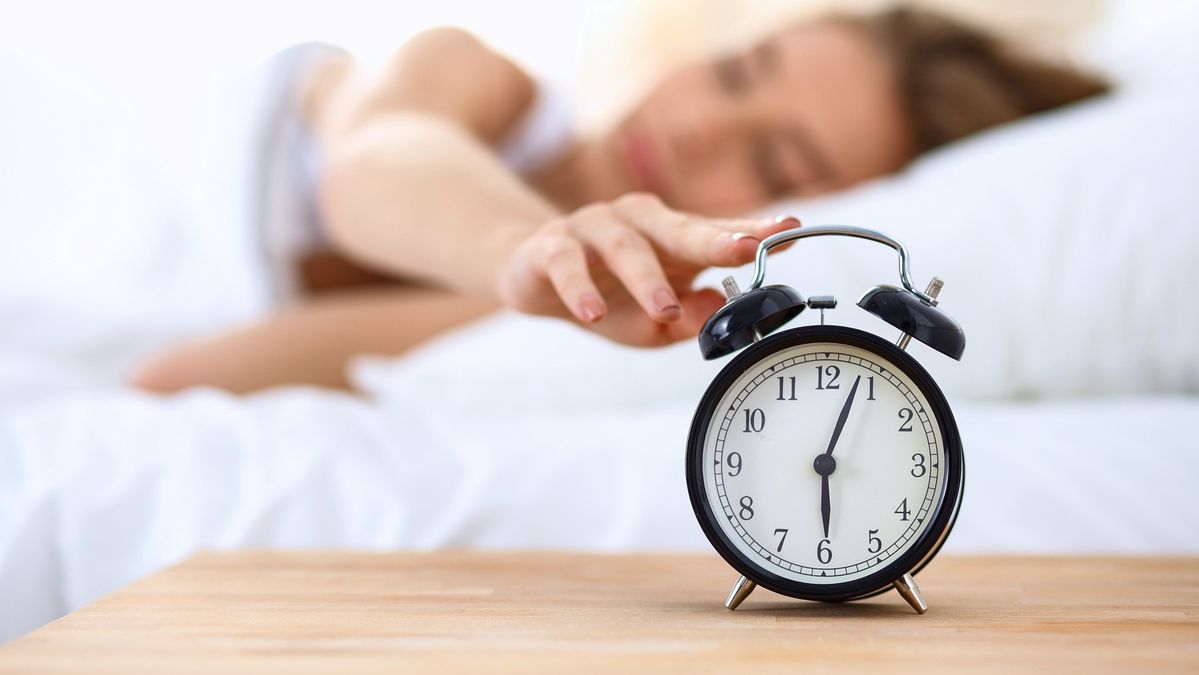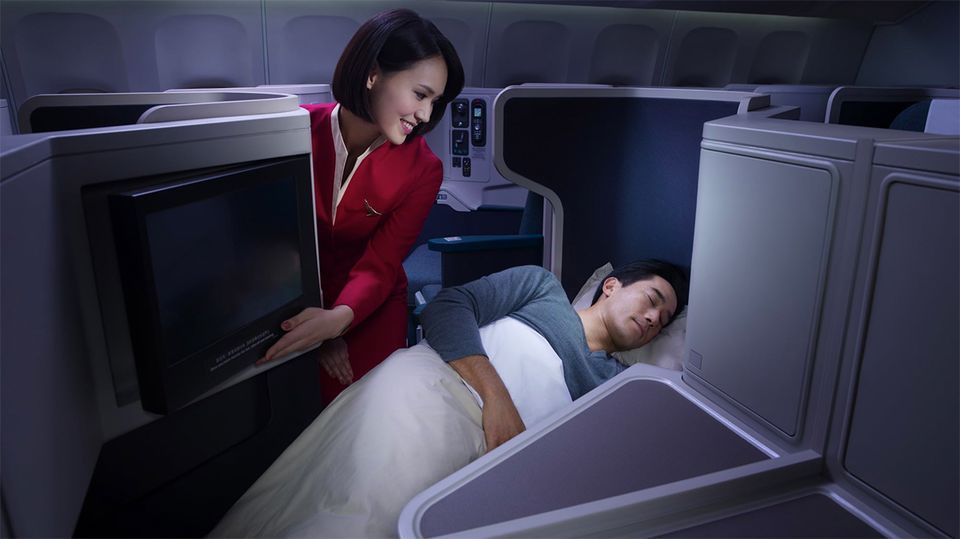Why every traveller should learn how to power nap
Struggling to adjust to a new time zone? A quick 15-minute doze could be just what the doctor ordered...

Jet lag is an experience uniting frequent travellers the world over. We’ve all endured it at some point. And while there’s no cure, you can tap into a free and underrated tool to jumpstart your internal battery and get back on the road: the power nap.
Long-favoured by politicians, academics and artists – Sir Winston Churchill, Margaret Thatcher and Salvidor Dali were all devotees of the daytime doze – the humble nap is like a fast-charge for your brain, and benefits can be felt in as little as 15 minutes.
As regular travellers know, jet lag occurs when your regular sleep patterns are disturbed, often by long flights or crossing multiple time zones. Irritability and poor concentration are just two of the common symptoms.
But rather than staring at the ceiling all night or staggering around Paris feeling like a zombie, a quick nap could be just what your body needs.
Dr Stephen Jasper from Torrens University Australia swears by this energising technique, with the ability to enjoy a well-timed snooze or siesta almost like a superpower for frequent travellers.
Power naps your most valuable tool
After criss-crossing the world and experiencing his fair share of restless nights and fuzzy-brain days in a former career, Dr Jasper devoted his PhD to studying the effects of time zone differences and jet lag, earning him the nickname of ‘The Jet Lag Guy’.
“What emerged was we know what jet lag is and how to treat it, yet no one seems to be doing it,” explains Dr Jasper, before reminiscing about a gruelling three-day Sydney to Buenos Aires return trip – and resulting jet lag – that prompted his investigations.
Some of the chief weapons in our jet lag-beating arsenal are pre-trip sleep adjustments, light therapy, and melatonin, plus simply powering through the day until you can sleep at the right local time. Dr Jasper believes power naps deserve a place on that list too.
“One of the things that happens when travelling is a ‘sleep deficit’. Having a power nap can really help that. Those short, sharp naps – even ones that only go for 15 to 20 minutes – are like a lightning recharge for your batteries.”
When shifting through multiple time zones, Dr Jasper suggests a quick nap can help boost your mental clarity, as well as improve your cognitive performance and logical reasoning.
Finding the sweet spot
Sleep is a very individual thing. Knowing and understanding your own sleep cycle and working with that, rather than trying to fight it or modify it, is the secret, according to Dr Jasper.
The post postprandial slump between 2pm and 4pm, commonly referred to as 3:30-itis – yes, it’s a real thing – is considered the best time for a power nap, as it’s not too early or late in the day.
“In terms of the sweet spot, I’d recommend you probably wouldn’t go over an hour, as there’s a danger your nap can turn into a marathon. 15-20 minutes is a good, refreshing nap.”
That said, everyone’s needs are different and it takes trial and error to learn what works for you.
Rather than go it alone in the quest to find your personal napping sweet spot, there are several power nap apps specifically designed to help you perfect this healthy habit, and you can even try them at home before you jet off.
Some popular power nap apps include:
- Timeshifter, available for iPhone and Android
- Pillow, only available for iPhone
- Power Nap with AJ/Andrew Johnson, available for iPhone and Android
- Pzizz, available for iPhone and Android
Tips to successfully power nap
Whether you’re aiming for a quick jumpstart or a longer one hour reinvigoration, there are a few essential ways to improve your chances of getting some shut-eye during the day:
- Choose your time carefully – early to mid afternoon is the general recommendation
- Make the space as dark as possible; sunlight streaming in only keeps you awake
- Try not to nap when you’re ravenously hungry, or after you’ve just had a big lunch
- Get the temperature levels right – as Goldilocks says, ‘not too hot or too cold’
Most importantly, set an alarm. Waking up five hours later is not going to be much help.


Etihad - Etihad Guest
21 Jul 2019
Total posts 189
This is probably the best practical advice I've seen on ET in many years. And it works too! For years, arriving jetlagged into London and Honolulu in the morning, I'd struggle to stay awake during that first arrival day to sync myself to the new time zones. Terrible! Coffee only made things much worse. Then one time in London, I opted for a short-ish nap on arrival. Talk about 'miracle' cure...on waking after 40 mins or so, I felt much better and refreshed, and got thru the rest of day practically jetlag-free. Everyone's different, but I'd strongly recommend a nap on arrival. You'll never know until you try..
26 Jul 2015
Total posts 22
Some (non-US) airlines allow their pilots to implement 'controlled rest' on the flight deck within protocols. You don't want to get into the deep sleep stage of the sleep cycle, so 15-20 mins is ok. The optics mightn't look too good for some pax seeing a pilot napping in their seat, so a good reason to keep the flight deck door closed/locked!
Qantas - Qantas Frequent Flyer
06 May 2018
Total posts 13
Just did a return marathon trip to JFK, via Jakarta and Doha, and tried out Timeshifter - a new app based on sleep programs for astronauts! The positive reviews don’t lie - a personalised program which starts up to 2 days ahead of your trip, based on you plugging in all your flights. I followed it 80+% and arrived in NYC with literally no jet lag! On the way home to MEL, minimal jet lag symptoms experienced. It is free to use for the first return trip, then there is an annual subscription of around $40. Highly recommended, and suggest that ET do a review. PS I have no affiliation with the company that developed this app - just found it when I was researching jet lag.
28 Aug 2014
Total posts 3
Plus one for Timeshifter. I used this app for a brutal 2 weeks starting BNE-Paris-Zurich-Sydney-Akl-Taupo-Akl-Bne. It was easy, starts 2 days before, and clearly states when to do caffeine, melatonin, naps, wear sunnies or grab sunlight. You key in your flights and it calculates everything automatically. First trip (all of those above individual trips) is free and then you pay. It is aware of layovers (my Singapore stops were factored in). I had absolutely no jet at all. The final weekend was a wedding where I needed to be awake and photogenic. On return to Brisbane, I felt fine, a little tired during the first day but nothing like I experienced previously on trips to europe. Melatonin is available from the chemist without prescription if you are over 55.
20 Oct 2015
Total posts 254
"Melatonin is available from the chemist without prescription if you are over 55." But only in 2mg tablets which are a uselessly small dose, just buy them online or from CVS or Wallgreen on your next trip to the USA, you can get 5mg or even 10mg and they are so cheap.
Hi Guest, join in the discussion on Why every traveller should learn how to power nap